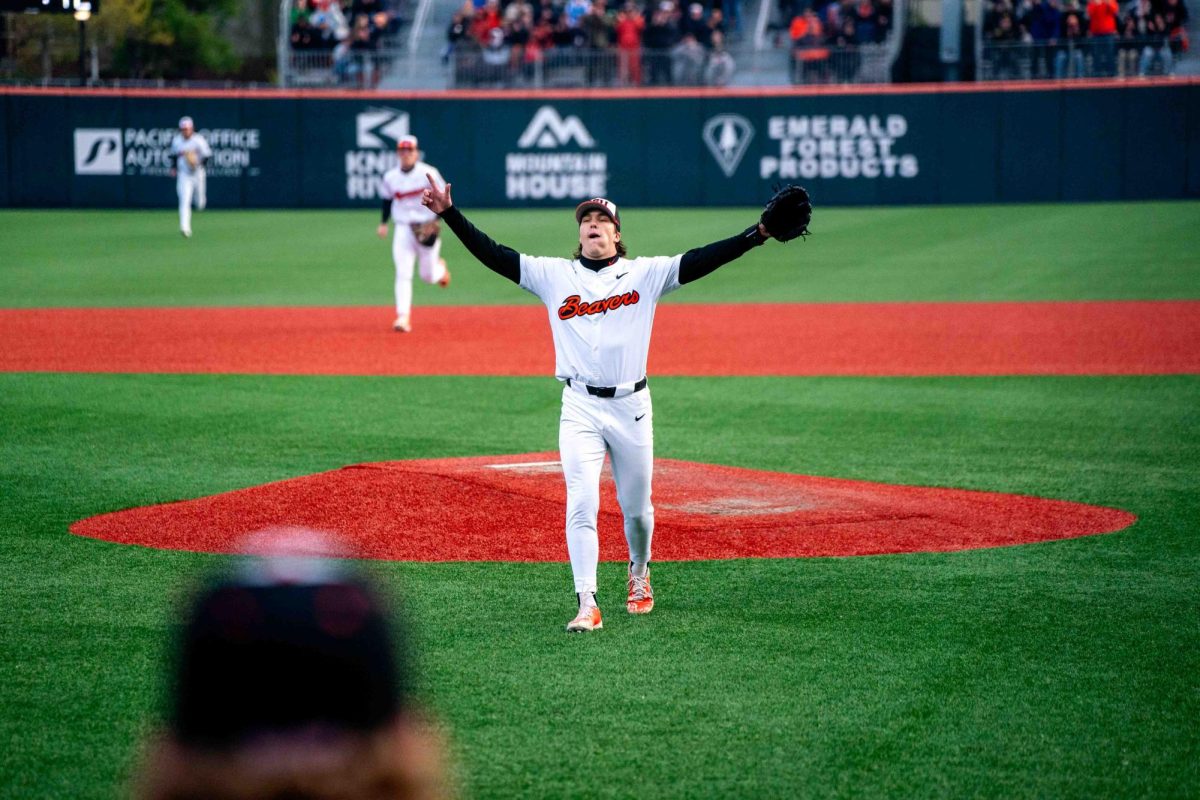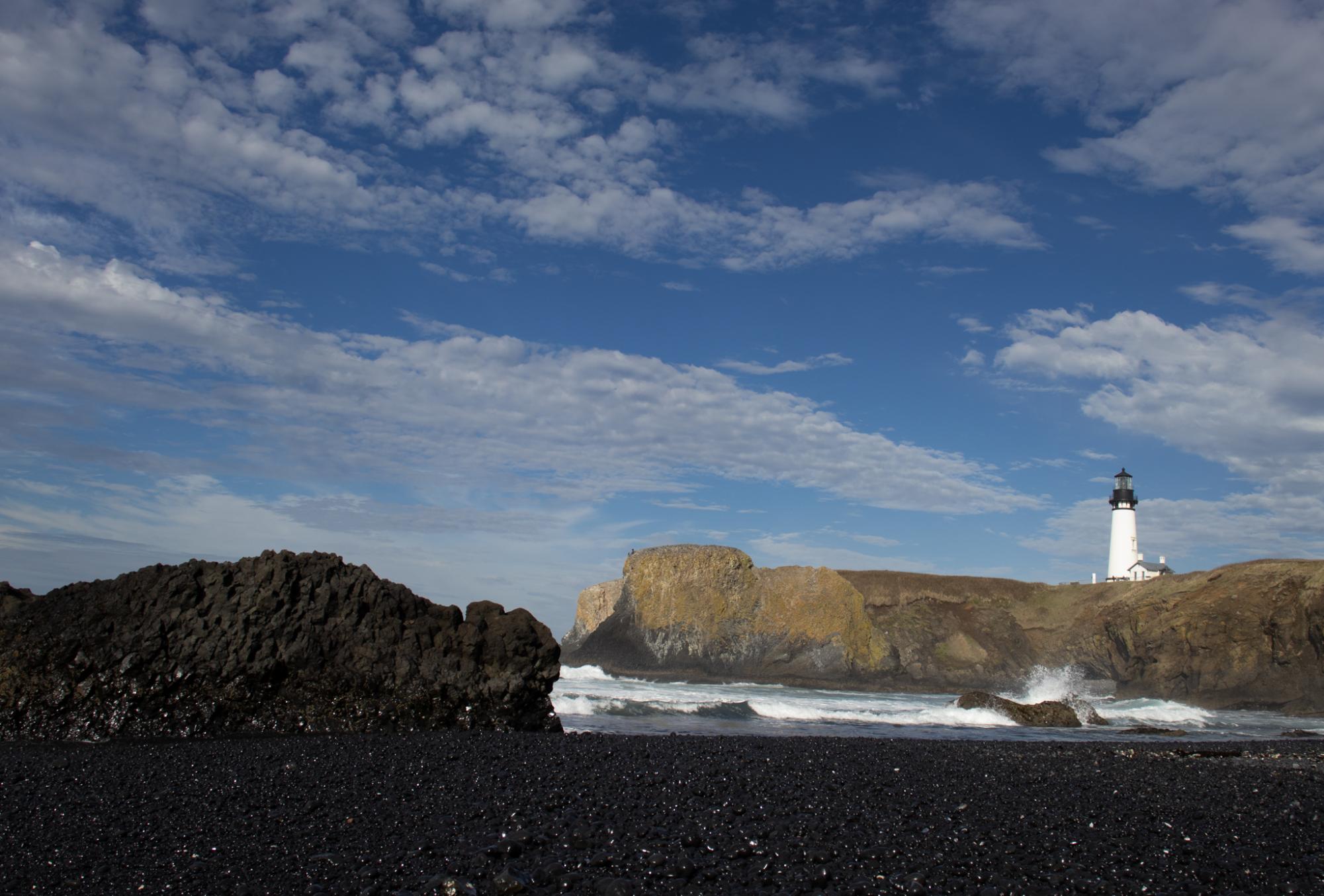The ground shakes harder, groaning louder, as if you had angered it more with your naive college-brain thinking: does this mean no final?
As the earth trembles beneath your feet, paper sliding off desks, wall decor rattling against the plaster, students scramble for their phones.
You couldn’t believe that’d be your first thought. Of course there would be no test.
It’s “The Big One.”
If you’ve lived in the Pacific Northwest for long enough, you’ve probably heard of “The Big One,” commonly known as the Cascadia Subduction Zone earthquake. It’s the earthquake we’ve been warned about long before our days coloring outside the lines and eating glue sticks. Should we fear it, accept it and just wait for the day it comes?
The Cascadia Subduction Zone is a 700-mile long fault that stretches from British Columbia to Cape Mendocino, California, stationed between the North American plate and the Juan de Fuca plate. According to the Pacific Northwest Seismic Network, the Juan de Fuca plate moves forward over time, eventually slipping underneath the North American plate.
This movement could create what’s known as a “megathrust earthquake,” a very large earthquake that occurs in a subduction zone. They have the capability of producing quakes with a magnitude of 8.5 or greater.
In the past, The CSZ has done just that, producing an estimated 9.0 magnitude earthquake on Jan. 26, 1700, over 300 years ago
Many scientists believe we’re overdue for The Big One. In the last 10,000 years, over 40 megathrust earthquakes have occurred, happening around 400 to 600 years after the previous one. Although these do not happen regularly, some quakes have been as close together as 200 years.
Ben Leschinsky, professor of geotechnical engineering at Oregon State University, who specializes in understanding liquefaction and landslides through earthquakes, agreed with this interval range.
“(With) the frequency, we expect it to be for under 620 years, but it varies,” Leschinsky said. “We expect that the intervals of time between (earthquakes) are also a function of how strong the earthquake will be. The more it’s locked up and energy’s building up, the stronger the earthquake or the larger the potential rupture.”
Having not been originally from Oregon, Lechinsky was prone to small, quiet earthquakes in the Northeast, although felt a quake originated in Virginia all the way while he was in New York City. Specifically, it was the 5.6 magnitude earthquake from Mineral, Virginia in 2011. Lechinsky moved to Oregon a year later.
“It was quite clear after I moved here that everyone’s talking about this Cascadia thing,” Lechinsky said. “This is clearly a problem, and it deserves research.”
According to another OSU earthquake expert, Andrew Miegs – professor of geology – inference on the Cascadia earthquake grew in the late 1980s to early 1990s. He acknowledges there’s a generation divide in terms of who knows about The Big One and who doesn’t.
“When I was growing up, people did not think we had a major earthquake problem,” Miegs said. “But the reason why you heard about it and I didn’t was because there was a scientific revolution in effect.”
On an Instagram poll conducted on Dec. 10 about The Big One, out of the 58 people who took it, 48% said they found out about The Big One before or in elementary school, 38% said in middle or high school and 14% said recently or in adulthood. The voter range included varying ages and locations of these individuals, but somewhere residing in the PNW.
Anna Jedrzejek, a third-year design and innovation management major, said she found out about The Big One at 10 years old. Her hometown is Belmont, California, which is only a few miles from the San Andreas fault line.
“We’ve been doing earthquake drills since kindergarten,” Jedrzejek said. “They have a machine where you can experience an earthquake at the California Academy of Sciences and we would go on field trips there.”
According to a scenario devised by the Cascadia Region Earthquake Crew, The Big One will be felt across the Pacific Northwest, with shaking lasting four to six minutes. The coast will subside six feet and a tsunami with a peak height of 30 to 40 feet will reach the coast in 15 to 30 minutes. Waves will continue to come in hours after the initial quake, and the first wave may not be the largest.
Flooding, harsh currents, landslides, fires, dam failures and hazardous material spills are likely to follow.
Lechinsky hypothesizes that Corvallis will be struck with liquefaction specifically, due to the Willamette Valley, so landslides and sand similar to quicksand is created.Though Lechninsky explained it wouldn’t be as dramatic as the movies. He describes liquefaction as a process of water being trapped in sand, and the sand begins to “float,” causing buildings and other infrastructure to float, shift and move.
In the CREW scenario, the death count could exceed 10,000 people, with an additional 30,000 injured. It’s estimated that Washington, Oregon and California will suffer an economic loss of $70 billion.
However, the proceeding tsunami would be more deadly than the initial earthquake. Out of every 1,000 people affected in a tsunami, an average of 79 deaths occur, whereas an average of four deaths occur every 1,000 affected by an earthquake, according to data taken from 1994 to 2013 provided by The Human Cost of Natural Disasters.
The CREW scenario advises coastal earthquake victims to evacuate as soon as the shaking stops and flee to higher ground. The scenario estimates that over 71,000 people live in tsunami inundation zones amongst Washington, Oregon and California, not including the thousands of travelers and workers on the coast daily.
Our region, the PNW, wasn’t built to withstand earthquakes and tsunamis, so much of our infrastructure will be damaged or destroyed. Businesses and transportation networks will be impacted negatively. Many people will become homeless and outside aid may take weeks to arrive. Electricity, water and communications will be stalled and disrupted for long periods of time.
Out of these infrastructures, emergency operations are the highest concern as they’ll need to have a fast recovery time to assess the damage. On the coast, buildings that will take 18 or more months to recover from the CSZ earthquake include 82% of emergency operations, 86% of police stations and 67% of fire stations, according to an 2013 Oregon Resilience Plan.
This report also stated that based on the findings of an Critical Buildings Task Group, “the state of Oregon is far from meeting (the) ideal of student safety today.” Oregon has over 2,000 educational buildings where a majority of these buildings have an inadequate or non-existent seismic design in every region of Oregon. It also added the seismic retrofit investment at the school district level has been limited.
Fourth-year OSU architectural engineering major, Sophia Matthews, said her major helped her realize how unprepared Oregon was for The Big One. She first heard about the earthquake in science class at Kennedy Middle School in Eugene, where the administration taught a whole unit dedicated to The Big One.
“The amount of buildings and construction materials that exist, like brick, won’t survive the earthquake,” Matthews said. “Transportation and evacuation routes also need to be updated to be seismically ready for the earthquake.”
Matthews was scared when she first found out about the megathrust quake, and admits she still is. She explained many of Oregon’s buildings will collapse immediately when the earthquake strikes.
According to Oregon.gov, “With the current preparedness levels of Oregon, we can anticipate being without services and assistance for at least two weeks, if not longer, when the CSZ earthquake occurs.”
In one model, the CSZ can be split into four segments, one being the area stretching from Newport to Astoria, Oregon, believing earthquakes occur within this area on average every 400 to 500 years. Although, according to 2016 findings from Oregon State University, the average was found to be only 350 years.
Researchers found more earthquakes occurred in the zone between Newport and Astoria than previously thought, with the help of collecting 195 submarine landslide deposits caused by earthquakes. In prior research, only a dozen or so samples were collected.
This new outreach of data has altered the chance of an earthquake happening within 50 years. There’s now a 15-20% chance of an earthquake occurring in Oregon’s zone, rather than 14-17% chance. The chances of the Washington and British Columbia zone having an earthquake increased from 8-14% to 10-17%.
Although these chances aren’t specifically for megathrust earthquakes, the new earthquake records show “complete ruptures occur slightly more than half the time” in past history, according to OSU.
“There’s been a lot of effort at OSU to work on the (CSZ),” Miegs said. “People here have been interested in earthquakes and also in the engineering world. Certainly the (new found) intervals of times between earthquakes from offshore records is one of things we’re most notable for.”
Currently, the chance of a megathrust earthquake of a magnitude of 7.5 or higher occurring along the CSZ in the next 50 years is 37%.
Given the past 10,272 years of earthquake history, 80% of the time the fault erupted before 324 years passed. Since the last megathrust earthquake occurred in 1700 and it’s 2024 now, 324 years is a bit overdue given the math.
There’s a bit left unfinished on understanding earthquakes, especially large, megathrust ones. Enough unfinished that OSU, along with 14 other institutions across the U.S., announced in September the production of the Cascadia Region Earthquake Science Center, funded with $15 million by the U.S. National Science Foundation.
Over the next five years, researchers will develop the center in order to seek a better understanding of the CSZ and the disastrous earthquake that will come with it.
According to CRESCENT’s website, their center is the nation’s first subduction zone earthquake hazards center, establishing itself in Eugene at the University of Oregon.
The center’s goals include developing a better functional understanding of the zone, promoting diversity, training the next-generation of geoscientists and providing a systematic approach to collaboration between researchers in academia and other agencies.
Lechinsky and Miegs are both participating in the center’s research.
“Largely as researchers, we recognize that with big problems, you need a big group of people with a diversity of expertise,” Lechinsky said, joking that researchers put aside the traditional rivalry between UO and OSU. “A group of people who serve very important, yet different roles. So you know, the rivalries are maybe a little less intense.”
“Earthquakes are an amazing thing, because they’re natural,” Lechinsky said. “They flex the strength of Mother Nature, right? There’s things that are impressive that humans can do, but we can say ‘Wow, I don’t think anything compares to what nature can do.’”
Leschinsky goes on to say what immense impact earthquakes have on our planet: creating new landscapes, such as the Himalayas, the coast range and the Cascade Range.
“I kind of love that to be honest with you,” Lechinsky said. “They basically give us the beautiful mountains that we have … The natural environment and the awesome power, in the true sense of the word ‘awesome,’ I think that’s what’s compelling about earthquakes.”
Although, we probably won’t be thinking of the beauty of new geological changes in our environment the moment The Big One actually strikes. Lechinsky acknowledges that many people are prone to feeling fearful of this due event, but recommends taking these fears and putting energy towards preparation instead: buying and storing non-perishable food, water, warm clothes, flashlights, extra batteries and other camping gear.
“It’s the unknown that’s scary, but there’s a lot of people working very hard to make the state of Oregon as resilient as possible,” Lechinsky said. “We have a plan to recover but there’s a lot as individuals that we can do and it doesn’t take that much effort. It takes a one-time shop at Fred Meyer in the canned section, right?”

















































































































